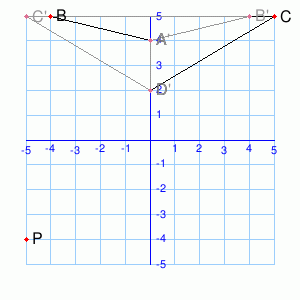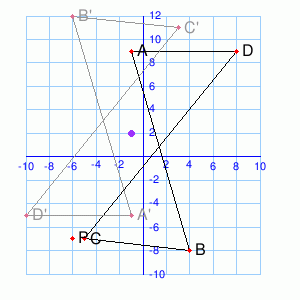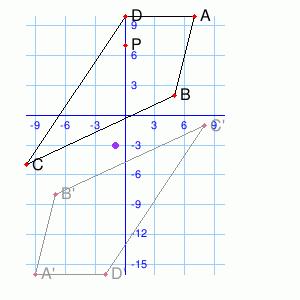Topic 7: Geometric And Transformations – Mathematics Study Notes Form Two
Welcome to our website darsahuru.co.tz, in this article, Are you looking for Topic 7: Geometric And Transformations – Mathematics Study Notes Form II, PDF Notes Geometric And Transformations, Mathematics Study Notes Form Two, Notes for Mathematics Form Two, Download Geometric And Transformations Notes Free, Geometric And Transformations – Topic 7: Mathematics Study Notes Form Two
Reflection
The Characteristics of Reflection in a Plane
Describe the characteristics of reflection in a plane
A transformation in a plane is a mapping which moves an object from one position to another within the plane. Think of a book being taken from one comer of a table to another comer.
Figures on a plane of paper can also be shifted to a new position by a transformation. The new position after a transformation is called the image. Examples of transformations are reflection, rotation, enlargement and translation.
Different Reflections by Drawings
The image in a mirror is as far behind the mirror as the object is in front of the mirror
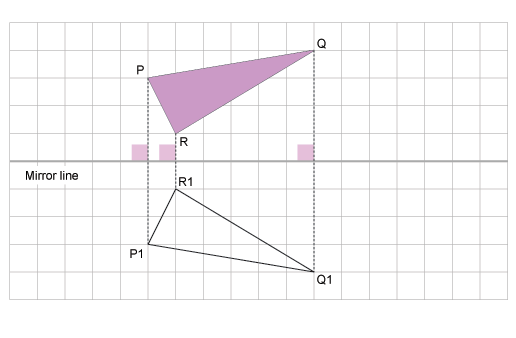
Characteristics of Reflection
In the diagram, APQR is mapped onto ΔP’Q’R’ under a reflection in the line AB. If the paper is folded along the line AB, ΔPQR will fall in exactly onto ΔPQR.
The line AB is the mirror-line. which is the perpendicular bisector of PP’, QQ’ and ΔPQR and ΔP’Q’R are congruent.
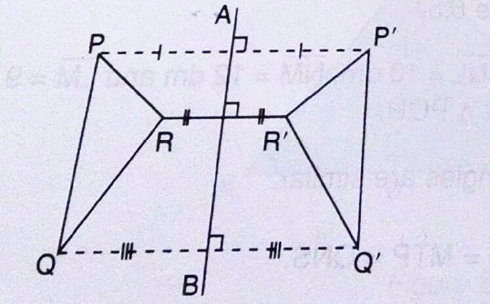
- PP’ is perpendicular to AB, RR’ is perpendicular to AB and QQ is perpendicular to AB.
- The image of any point on the Q’ mirror line is the point itself.
- PP’ is parallel to RR’ and QQ’
Reflection in the Line y = x
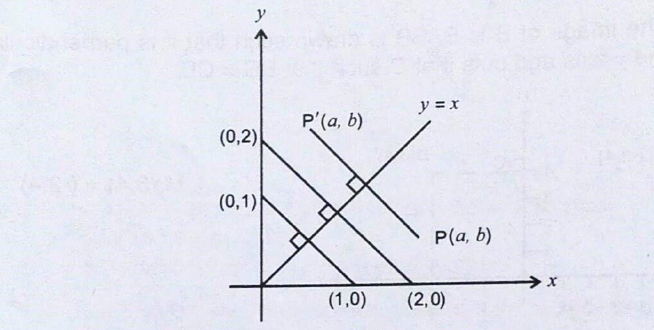
Exercise 1
1. Find the image of the point D(4,2) under a reflection in the x-axis.
2. Find the image of the point P(-2,5) under a reflection in the x-axis.
3. Point Q(-4,3) is reflected in the y-axis. Find the coordinates of its image.
4. Point R(6,-5) is reflected in the y-axis. Find the co-ordinates of its image.
5. Reflect the point (1 ,2) in the line y = -x.
6. Reflect the point (5,3) in the line y = x.
7. Find the image of the point (1 ,2) after a reflection in the line y=x followed by another reflection in the line y = -x.
10. Find the coordinates of the image of the point under a reflection in the line x = 0.
11. The co-ordinates of the image of a point R reflected in the x axis is R(2, -9). Find the coordinates of R.
Rotations
Characteristics of a Rotation on a Plane
Describe characteristics of a rotation on a plane
- the centre of rotation,
- the angle of rotation, and
- the direction of rotation
Example 1
Copy the figure T and rotate 180° about the origin.
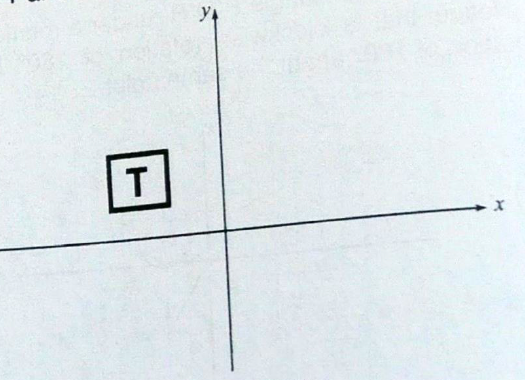
Different Rotation on a Plane by Drawings
Represent different rotation on a plane by drawings
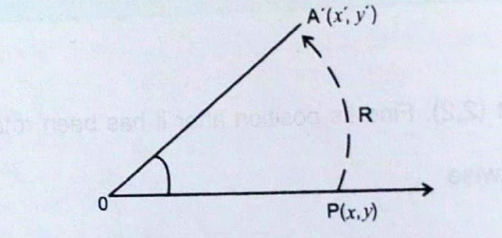

P is on the x-axis
Exercise 2
1. Find the image of the point (1, 2) under a rotation through 180° anti-clockwise about the origin.
2. Find the rotation of the point (6, 0) under a rotation through 90° Clockwise about the origin.
3. Find the rotation of the point (-2, 1) under a rotation through 270° clockwise about the origin.
4. Point Q(5, -4) is rotated through 270° in the clockwise direction. Find the coordinates of its image.
5. Find the image of (1, 2) after a rotation of -90°
6. Find the image of (-3, 5) after a rotation of -180°
7. Find the image of (-5, 0) after a rotation of -180°
8. Find the image of (-5, 0) after a rotation of 180° about the origin. Comment about the results of questions 7 and 8.
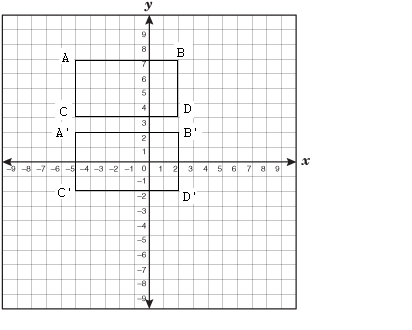
Translation drawings
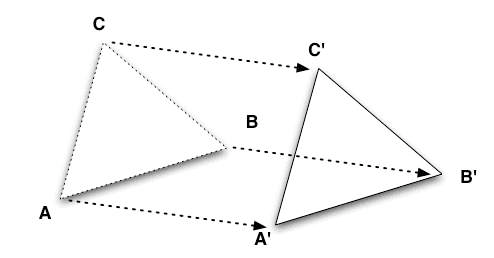
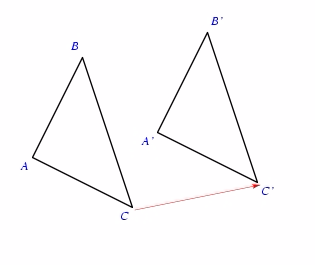
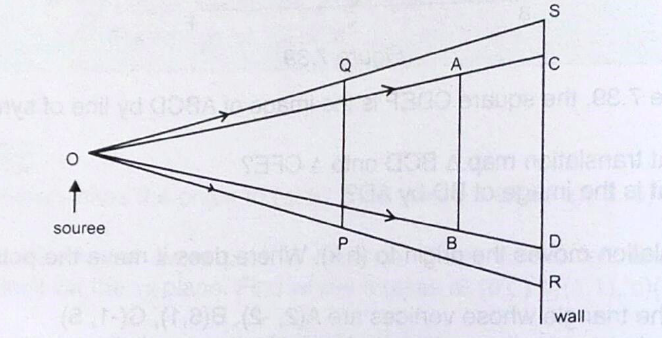
Enlargement

In the figure, triangle ABC is a scale measurement of triangle PQR, where the scale is 1:2.
Exercise 3
- A. 15 km when the scale is 1:500000
- B. 45 km when the scale is 1 km to 900 m.
Consider two similar rectangles shown in the figure below with a scale factor k.

If AB = a and AD = a, then PO = ak and PS bk
Figures to Scale
Example 2
Enlarge triangleABCwith a scale factor1/2, centred about the origin.
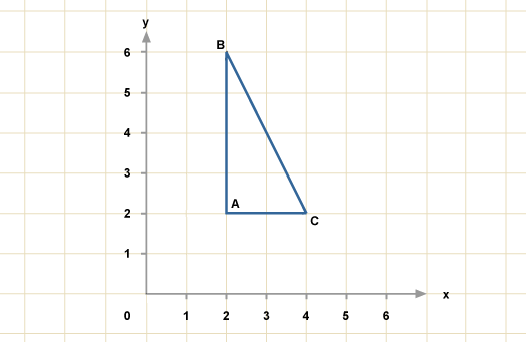
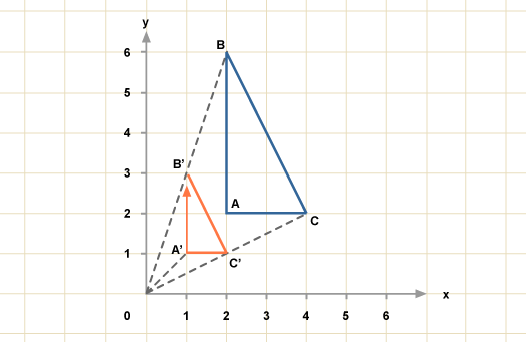
The scale factor is1/2, so:
Exercise 4
- Two triangles are similar but not congruent. Is one the enlargement of the other?
- The length of a rectangle is twice the length of another rectangle. Is one necessarily an enlargement of the other? Explain.
- In the figure below BC DE, AB 5 cm, BD = 3cm and EF = 4 cm
- State which triangle is an enlargement of ΔABC
- Calculate the scale factor of the enlargement.
Combined Transformations
Example 3
What type of transform takes ABCD to A’B’C’D’?
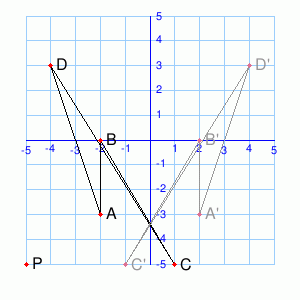
Solution
Exercise 5
What type of transform takes ABCD to A’B’C’D’?
